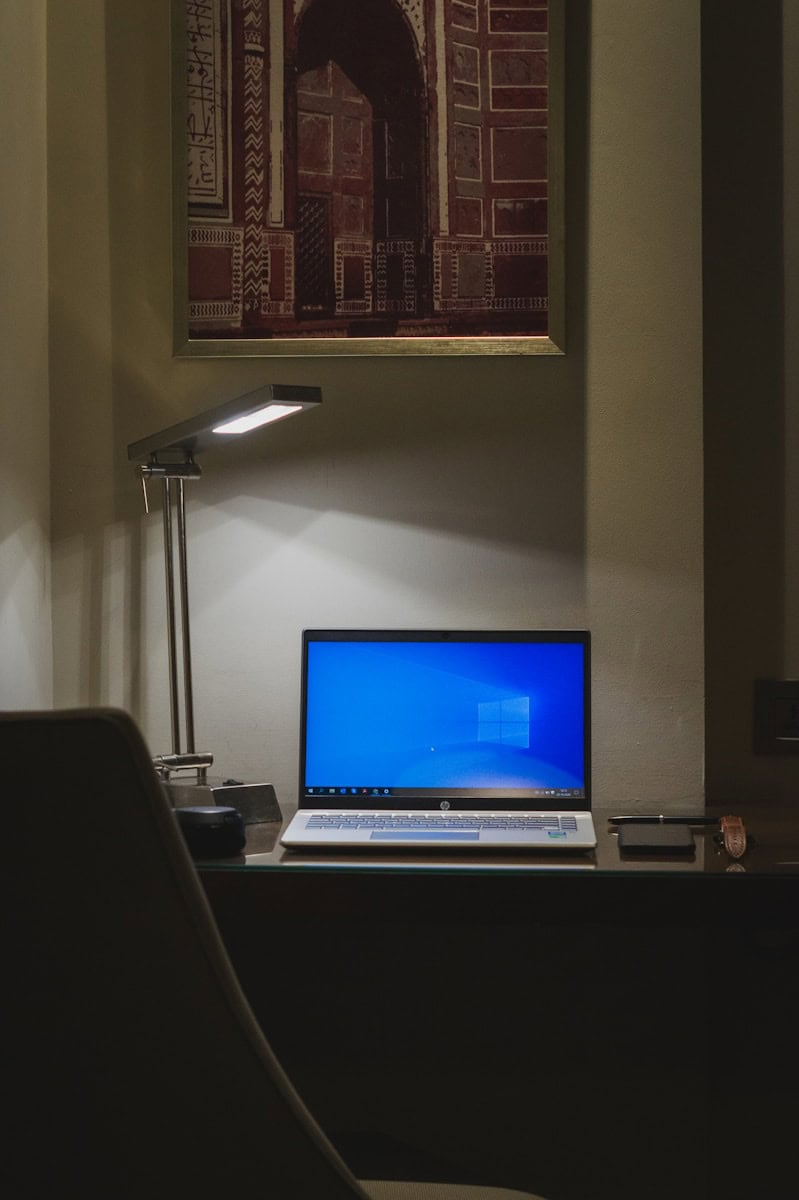As Microsoft prepares to officially end support for Windows 10 on October 14, 2025, many users are asking a critical question: Will I still be able to activate my copy of Windows 10 after that? The answer is yes—but with some important caveats.
Activation Will Still Work Post-EOL
Just because Microsoft is ending support for Windows 10 doesn’t mean they’re shutting down the activation servers. Here’s what you can expect:
- ✅ Activation servers remain online
Microsoft typically allows OS activations long after a version reaches end-of-life. Even Windows 7, which lost support in early 2020, can still be activated today. There’s no indication that this policy will change for Windows 10. - ✅ Reinstalls and clean installs are fine
Whether you’re refreshing your system or setting up a new hard drive, you’ll still be able to reinstall and activate Windows 10 using your product key or digital license. - ✅ Digital entitlement still applies
If you previously activated Windows 10 on your device, your license is tied to the hardware. Windows will typically auto-activate when reinstalled, especially if you’re signed into a Microsoft account linked to that license. - ✅ OEM systems remain valid
Computers that shipped with Windows 10 preinstalled will continue to activate normally, even after EOL.

What You Won’t Get After October 14, 2025
While you can still activate Windows 10, support ends in other critical ways:
| Feature/Support | Available After Oct 14, 2025? |
|---|---|
| OS Activation | ✅ Yes |
| Security Updates (free) | ❌ No |
| New Feature Updates | ❌ No |
| Technical Support from Microsoft | ❌ No |
| Extended Security Updates (paid) | ✅ Yes (via ESU program) |
Microsoft has confirmed a new Extended Security Updates (ESU) program for Windows 10. This allows users—both enterprise and individual—to purchase yearly security patches through 2028. The cost starts at $61/year for business users and $30/year for home users, and increases each year.
💡 Note: The ESU does not include feature upgrades, bug fixes, or free support—just critical security patches.
Why You Still Need to Activate Windows 10
Even after support ends, activating Windows 10 is essential for a few reasons:
- 🚫 Avoid the “Activate Windows” watermark, which stays on the bottom right of the screen until activation.
- 🎨 Unlock personalization settings, such as changing wallpapers, lock screen, themes, and colors.
- 🔐 Maintain digital license status, in case you later upgrade to Windows 11 on the same hardware.
You can activate Windows 10 by navigating to:
Settings → Update & Security → Activation
There, you’ll be able to enter a product key or troubleshoot activation using your Microsoft account if your PC has previously been licensed.
Should You Keep Using Windows 10?
If your device doesn’t support Windows 11, or if you’re simply not ready to upgrade, running Windows 10 after October 2025 is still possible—just less secure. Without ongoing updates, your system becomes increasingly vulnerable to threats.
Options include:
- 💻 Staying offline or air-gapped
- 🛡️ Paying for Extended Security Updates
- 🔁 Switching to lightweight Linux distributions for older PCs
- 🆙 Upgrading to a supported version of Windows or buying a new PC
So while activation won’t be a problem, security will be—and that should weigh heavily into your post-2025 planning.
Key Takeaways
- Windows 10 activation removes the watermark and unlocks personalization features through Settings > Update & Security > Activation.
- Users can activate Windows 10 using either a digital license connected to their Microsoft account or by entering a valid product key.
- After successful activation, your copy of Windows 10 remains activated even after hardware changes and system updates.
Understanding Windows 10 Activation
Windows 10 activation verifies that your copy of Windows is genuine and not being used on more devices than the Microsoft Software License Terms allow. Activation helps establish a link between your device and a valid Windows 10 license.
Differentiating Between Digital License and Product Key
Windows 10 offers two primary methods of activation: Digital License and Product Key. A Digital License (formerly called digital entitlement) is tied to your hardware configuration and Microsoft account. No product key is stored or needed for future reinstallations on the same device.
A Product Key is a 25-character code that looks like this: XXXXX-XXXXX-XXXXX-XXXXX-XXXXX. Users receive this key when purchasing Windows 10 from a retailer or when Windows comes preinstalled on a new device.
To check your activation status, go to Settings > Update & Security > Activation. This screen shows whether you’re activated and which method is being used.
If you make significant hardware changes, the Digital License might not recognize your device. Microsoft provides a troubleshooter to help transfer the license in these cases.
Benefits of Activating Windows 10
Activating Windows 10 removes the persistent “Activate Windows” watermark in the bottom-right corner of the screen. This improves the user experience by eliminating this distracting element.
Personalization features become fully available after activation. Users gain access to:
- Custom themes and desktop backgrounds
- Start menu customization
- Lock screen personalization
- Accent color adjustments
Security is another key benefit. Activated copies receive all security updates, protecting users from emerging threats and vulnerabilities. Microsoft regularly patches security issues, making these updates crucial for system protection.
Some performance optimizations are only available to activated users. These include features that improve system responsiveness and efficiency over time.
Preparing for Activation
Before activating Windows 10, users need to gather the right information and check if their system meets the requirements. This preparation helps ensure a smooth activation process.
Locating Your Windows 10 Product Key
The product key is a 25-character code that proves you purchased a legitimate copy of Windows 10. For retail purchases, the key is typically found on a card inside the box or in an email confirmation if bought online.
If Windows came pre-installed on a computer, the key is embedded in the system’s BIOS or UEFI firmware. Users can find this information by:
- Checking the Certificate of Authenticity sticker on the computer
- Looking through purchase records or receipts
- Using third-party software to extract the embedded key
Users can also check if their current Windows installation is already linked to a Microsoft account. To do this, go to Start > Settings > Update & Security > Activation.
Ensuring System Compatibility with Windows 10
Before activation, it’s important to verify that the computer meets Windows 10’s minimum requirements. This prevents potential issues during and after activation.
The basic requirements include:
- Processor: 1 GHz or faster
- RAM: 1 GB for 32-bit or 2 GB for 64-bit
- Hard disk space: 16 GB for 32-bit or 32 GB for 64-bit
- Graphics card: DirectX 9 compatible with WDDM 1.0 driver
- Display: 800×600 resolution
Users should run Windows Update to install all necessary patches before activation. This helps resolve compatibility issues that might interfere with the activation process.
For those upgrading from earlier versions of Windows, Microsoft’s compatibility check tool can identify potential hardware or software conflicts.
Activating Windows 10
Windows 10 requires activation to remove watermarks and access all features. Several methods exist to activate your copy of Windows depending on your specific situation and preferences.
Using the Settings App to Activate
The Settings app provides the simplest way to activate Windows 10. Users can begin by clicking the Start menu, then selecting Settings > Update & Security > Activation.
If Windows isn’t already activated, the screen will display activation options. Users with a valid product key can select “Change product key” and enter their 25-character code. The system will verify the key online and complete the activation process.
For users who purchased a digital copy of Windows 10, the activation may happen automatically through a Digital License linked to their Microsoft account. In this case, no product key entry is required as Windows recognizes the license when connected to the internet.
Activating via Command Prompt
Command Prompt offers an alternative activation method for advanced users. To use this approach, users should first open Command Prompt as administrator by right-clicking the Start button and selecting the appropriate option.
Once Command Prompt is open, users can type:
slmgr /ipk XXXXX-XXXXX-XXXXX-XXXXX-XXXXX
(Replace the X’s with your actual product key)
After entering the key, they should execute:
slmgr /ato
This command attempts to activate Windows using the provided product key. The system will display a message indicating whether activation was successful.
Troubleshooting Activation Errors
Activation issues can occur for various reasons. If users encounter problems, the built-in troubleshooter can often resolve them. Access it through Settings > Update & Security > Activation > Troubleshoot.
Hardware changes can cause activation problems, especially with Digital Licenses. If components like the motherboard were replaced, users may need to run the activation troubleshooter and select “I changed hardware on this device recently.”
Network connectivity issues might prevent activation. Ensuring a stable internet connection before attempting activation can prevent many common errors.
For persistent problems, users can contact Microsoft Support through the Windows 10 Settings app or visit the Microsoft support website for additional assistance.
After Activation: Customization and Tips
Once Windows 10 is activated, users gain full access to personalization features and can remove the annoying activation watermark. These improvements allow for a more tailored and professional computing experience.
Personalizing Your Windows 10 Experience
With an activated Windows 10, users can access all personalization options that were previously restricted. The Settings app becomes a powerful customization tool where users can make their system truly their own.
To access personalization options:
- Right-click on the desktop and select Personalize
- Or go to Settings > Personalization
From here, users can change:
- Desktop backgrounds and colors
- Lock screen images
- Theme settings
- Start menu appearance
- Taskbar configuration
Windows 10 also allows users to synchronize these settings across multiple devices when signed in with a Microsoft account. This creates a consistent experience regardless of which computer they use.
Removing the Activation Watermark
After proper activation, the “Activate Windows” watermark disappears automatically from the bottom-right corner of the screen. This happens almost instantly after successful activation.
If the watermark persists after entering a valid Windows 10 license key, users can try these solutions:
- Restart the computer to apply all changes
- Run the activation troubleshooter by going to Settings > Update & Security > Activation > Troubleshoot
- Check activation status to ensure the product key was properly registered
Some users report needing to wait up to 24 hours for the watermark to fully disappear after activation. If problems continue, contacting Microsoft Support is recommended for additional assistance.
Frequently Asked Questions
Windows 10 activation can seem complicated, but most common questions have straightforward answers. Below are answers to the questions users ask most often about activating their Windows 10 systems.
What are the steps to activate Windows 10 using a product key?
To activate Windows 10 with a product key, users should first click on the Start menu and open Settings. From there, they should select “Update & Security” and then click on “Activation” in the left sidebar.
If Windows is not activated, they’ll see an option to “Change product key” or “Add a product key.” After clicking this option, they can enter their 25-character product key and click “Next” to start the activation process.
Windows will verify the key with Microsoft’s servers. Once verification is complete, the system will be activated.
Is it possible to activate Windows 10 without using a product key?
Yes, Windows 10 can be activated without a traditional product key through several methods. One legitimate way is by linking a Microsoft account to a digital license.
If a device previously had an activated copy of Windows 10, the digital license remains tied to that hardware. Simply reinstalling Windows and signing in with the same Microsoft account will reactivate it automatically.
Some users can also activate through their organization’s volume licensing program using their work credentials instead of a product key.
What are the implications of not activating Windows 10 on its functionality?
Unactivated Windows 10 continues to function but with notable limitations. The most visible restriction is a persistent watermark on the desktop indicating the system isn’t activated.
Personalization features become limited. Users cannot change the desktop wallpaper, accent colors, lock screen, themes, or other visual settings through the Settings app.
Microsoft also disables certain non-essential features and may display periodic activation reminders. However, core functionality like web browsing, document editing, and most applications will work normally.
How can one activate Windows 10 using Command Prompt (CMD)?
To activate Windows 10 through Command Prompt, users must first open CMD as an administrator by right-clicking the Start button and selecting “Command Prompt (Admin)” or “Windows PowerShell (Admin).”
They should then type slmgr /ipk XXXXX-XXXXX-XXXXX-XXXXX-XXXXX (replacing X’s with their product key) and press Enter. This command installs the product key.
Next, they need to type slmgr /ato and press Enter to attempt activation. The system will display a message indicating whether activation was successful.
Can Windows 10 be activated for free legally, and if so, how?
Windows 10 can be legally activated for free in specific scenarios. Users who upgraded from a genuine Windows 7 or 8.1 installation during Microsoft’s free upgrade period received a digital license.
Those with accessibility needs may still qualify for free activation through Microsoft’s assistive technologies program, though this offer has changed over time.
Students and faculty at many educational institutions can obtain free Windows 10 licenses through their school’s agreement with Microsoft.
Where can I find guides or tutorials for activating Windows 10?
Official guidance on Windows 10 activation is available on the Microsoft Support website. Microsoft provides detailed, step-by-step tutorials with screenshots for various activation scenarios.
Many technology websites like Tom’s Hardware, How-To Geek, and MakeUseOf offer comprehensive guides for activating Windows 10. These often include troubleshooting tips for common activation errors.
YouTube contains numerous tutorial videos demonstrating the activation process. These visual guides can be particularly helpful for users who prefer seeing the process demonstrated rather than reading instructions.







